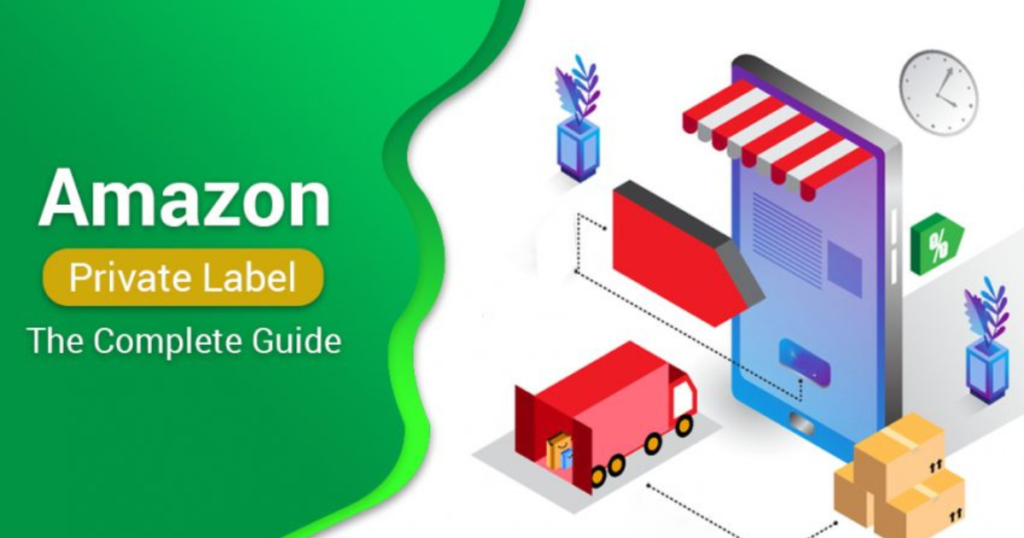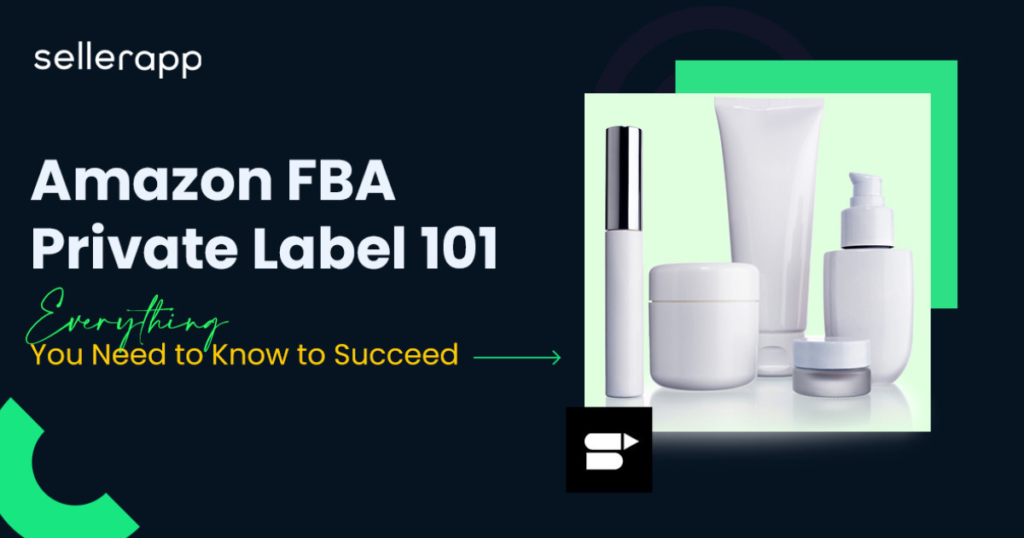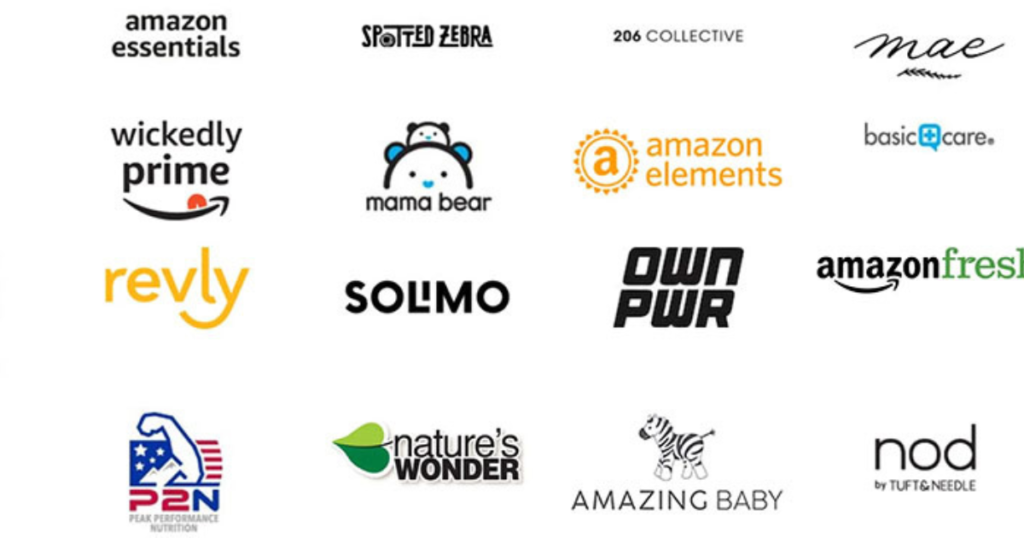
What is Private Label ?

Selling private label products on Amazon means selling items made by a manufacturer but under your own brand name, logo, and packaging. You are not making the products yourself. Instead, you work with a supplier who already knows how to make them. You simply customize the product, design your packaging, and add your branding. If you use Amazon FBA (Fulfilled by Amazon), Amazon stores your products, packs orders, ships them to customers, and handles returns for you. This makes selling much easier, especially for beginners.
Step-by-Step: How to Sell Private Label Products on Amazon

The first step is to find a good product idea. Look at Amazon’s “Hot New Releases,” “Best Sellers,” or trending items on social media platforms like Tik Tok and Instagram. You can also visit local stores to see what is popular. Try to find products that people want but that big brands are not selling yet. For example, if silicone baking mats are popular but most look plain, you could sell colorful, patterned versions to stand out.
The second step is to choose the right type of product. It is better to pick small, light items because they are cheaper to ship and store. Choose products that sell all year round instead of only during certain seasons like Christmas or summer. Also, pick simple items that don’t break easily and don’t have complicated rules, such as electronics or food. For example, yoga mats, water bottles, and phone holders are great because they are simple and used every day.
The third step is to check the market before investing in stock. You should know how many units a product sells and how strong the competition is. You can use research tools like Jungle Scout, Helium 10, or AMZ Socut to see the sales numbers. It is better to choose products that sell between 250 and 400 units per month and have fewer than 100 reviews. Try to avoid categories where big, well-known brands dominate the results because competing with them is harder.

The fourth step is to find a reliable supplier. Websites like Alibaba.com and GlobalSources.com are good places to start. Contact three to five suppliers and ask about prices, customization options, shipping costs, and minimum order quantities. Always request product samples before placing a large order. This way, you can check the quality and make sure the product matches your expectations.
The fifth step is to create your brand. Your brand should have a professional logo, brand colors that look good together, and packaging that catches the customer’s eye. Even a small difference in design, color, or shape can make your product stand out. For example, if you are selling kitchen utensils, you could package them in a colorful box with clear cooking tips printed on it.
The sixth step is to decide how to ship your products. If you choose air shipping, your products will arrive faster, usually in 5 to 10 days, but it will cost more. If you choose sea shipping, it is cheaper but slower, taking 20 to 40 days. If you use Amazon FBA, you can ship your products directly to Amazon’s warehouse, where they will be stored until customers place orders.
The seventh step is to choose your manufacturer. Pick the one that offers good quality products, communicates clearly, and gives you a fair price. Don’t always go for the cheapest option, as poor quality can damage your brand. Negotiate better prices if you plan to order in large quantities and use safe payment methods like Alibaba Trade Assurance or PayPal to protect your money.
The eighth step is to create your Amazon listing. Upload clear, high-quality photos showing the product from different angles. Use important keywords in your title so customers can find your listing easily. Write short bullet points to highlight the benefits of your product and include a detailed description. Showing your product in use, such as a person cooking with your kitchen tool, helps customers imagine owning it.
The ninth step is to promote your product. Use Amazon PPC (pay-per-click) ads to get more views and sales. Sign up for Amazon Brand Registry to protect your brand and unlock extra marketing features. Keep checking your sales performance and make improvements to your listing when needed, such as updating photos or rewriting descriptions.
Benefits of Selling Private Label on Amazon
One big benefit is that you have your own brand, so no one else can sell exactly the same product. This gives you more control over your pricing and sales.
Another benefit is that private label products often bring higher profits because you decide how much to charge. You are not competing only on price like sellers of generic items.
You can also grow your brand over time by adding more products under the same brand name. If customers trust your brand, they are more likely to buy your other products.
Finally, having your own brand builds customer loyalty. People remember brands that give them a good experience and are more likely to buy again.
What is Amazon’s Private Label?
Amazon’s private label is when you sell products made by another manufacturer but branded with your own name and style. You can either improve an existing product by fixing common issues or create something entirely new. Many sellers choose to make small improvements to products that are already selling well.
For example, Amazon Essentials is a private label brand for basic clothing. The clothes are made by manufacturers but carry the Amazon Essentials brand name. Sellers can do something similar with their own products.
Amazon FBA Private Labeling

Amazon FBA private labeling means you sell your own branded products and Amazon handles storage, packing, shipping, and customer service. This can save you a lot of time and money because you don’t need a warehouse or staff to manage orders.
However, FBA is not free. You must pay Amazon’s fees, so it’s important to calculate your profit margin before you start. Use Amazon’s FBA calculator to make sure you can still make a profit after paying fees.
Examples of Amazon Private Label Products

Amazon Basics batteries are a good example because they are affordable but still good quality.
Anker electronics are another example. They offer chargers and accessories that are reliable but cheaper than Apple or Samsung products.
Jungle Creations washable pee pads are also popular because they have professional photos and clear descriptions that help them sell.
Amazon Private Label Requirements
Every product needs a unique barcode called a UPC (Universal Product Code). You must buy these from GS1, the official barcode provider, before you can list your product on Amazon.
Your product must have high-quality images that are clear, bright, and realistic. Amazon accepts images in JPEG, PNG, GIF, or TIFF formats.
You need accurate product descriptions that explain the main features and benefits of your product. Use simple language and keywords so customers can find your listing easily.
Your pricing should be competitive. Check similar products to decide a fair price and adjust it during seasonal changes if necessary.
You must decide on a shipping method that is fast enough to qualify for Prime, either by using Amazon FBA or offering quick delivery yourself.
Keep good control of your inventory. Having too little stock can mean lost sales, while having too much can cost you extra storage fees.
Encourage customers to leave reviews. Positive reviews build trust, while negative ones can help you improve your product.
Follow all of Amazon’s policies. You must have a seller account and provide safety documents if your product requires them.
If you have a registered trademark, join Amazon Brand Registry. This will help protect your brand from copycats and allow you to create better listings.
Amazon Private Label Brands

Amazon Essentials sells everyday clothing and accessories for men, women, and kids.
Core 10 focuses on women’s activewear and sports clothing.
Good threads offers trendy and casual clothing for men and women.
Lark & Ro specializes in stylish women’s dresses, tops, and workwear.
Mae sells women’s lingerie, sleepwear, and underwear.
Buttoned Down offers premium men’s dress shirts and workwear.
Spotted Zebra has fun and colorful clothing for kids.
Daily Ritual sells soft and comfortable women’s casual wear.
Amazon Aware is a brand for sustainable clothing and products.
Peak Velocity offers high-performance sportswear for men.
Amazon Private Label Courses
Amazon private label courses teach you how to create your brand and sell successfully on Amazon. They cover how to find profitable products, how to choose reliable suppliers, how to design your logo and packaging, how to write product listings, and how to use Amazon FBA.
These courses also teach marketing techniques, such as running ads and using keywords to increase sales. Many also explain inventory management so you don’t run out of stock or over-order.
Some courses are free and give basic information. Others are paid and provide more detailed step-by-step training, sometimes including live support groups. Paid courses can cost anywhere from $50 to over $1,000 depending on the quality and depth of the training.
FAQs
What is an Amazon private label course?
It is a training program that teaches you how to create your own brand and sell products on Amazon.
Do I need experience to take these courses?
No, most courses are designed for beginners and guide you step by step.
How long does it take to finish a course?
Some courses take only a few hours, while others take several weeks.
Are these courses free?
Some are free, but many high-quality courses cost money.
Conclusion
Selling private label products on Amazon is a great way to start your own brand and reach millions of customers. You don’t have to invent something new — you can take an existing product, improve it, and sell it with your own brand identity. With proper research, a good supplier, and smart marketing, you can build a business that grows steadily. For beginners, taking a good course can speed up success and help you avoid costly mistakes.



